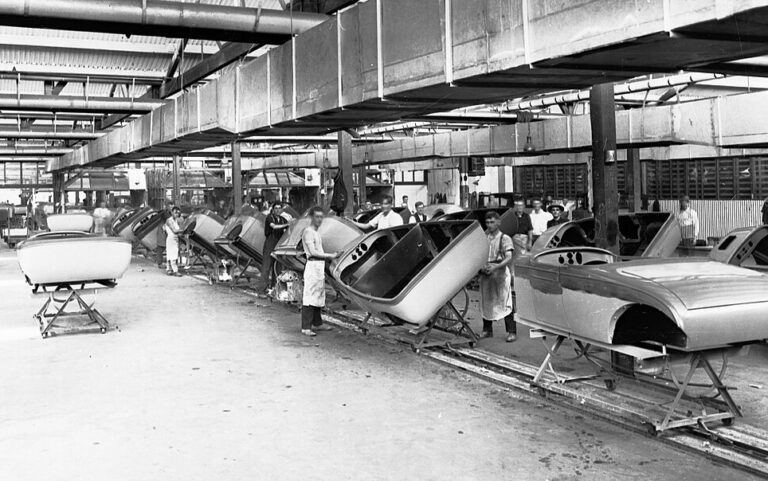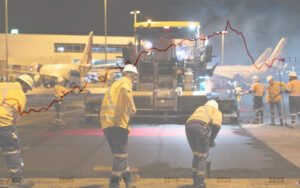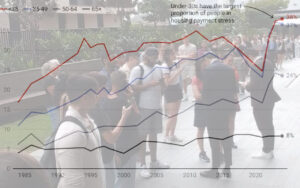The struggle for the working class to hold and maintain political power and influence has always been difficult. Many factors contribute to the likelihood of labour unions, individual organisations, or grassroots communities accomplishing a swaying of the tides within government policy.
Australia’s gradual shift away from manufacturing and its growing obsession with the public sector and international trade has eroded the political power of Australians and their ability to protest government overreach or mismanagement.
Contributing factors include the changing levels of industry, a continued obsession with globalisation, the housing market, and the demographical and cultural changes that have all contributed to a weakening of the Australian working class.
Foundations of the Australian economy
It’s a bittersweet reality that the Australian people are suffering despite an abundance of natural resources. “With golden soil and wealth for toil” was not put in our national anthem on a whim.
As Australia prospered during the goldrush throughout the mid to late 1800s so did its people with the adoption of high wages, largely influenced by the formation of various labour unions in the wake of the Eureka Stockade, which fought to abolish unjust taxes on the gold miners.
This rapid increase in the labour force and the close ties this population had to the very exports they were harvesting allowed for strong political movements to form and maintain high levels of working standards and wages.
This trend continued throughout the various booms in our economy, particularly within the wool industry which became Australia’s largest export.
This is of note due to the close relationship the workers had to the exports they were harvesting.
During this time there was little bureaucratic middle management involved in Australia’s economy as it was still in its infancy, which allowed workers to hold far more leverage within society than they do today.
Manufacturing in Australia and the nuclear family
With the dawn of the 19th century Australia’s economy saw a massive increase in its manufacturing industry, mainly due lack of imports during WW1 which Australia responded to by producing its own steel along with other goods. This then led to the establishment of the automotive industry in Australia with Ford and General Motors setting up shop in the aftermath of WW2 which continued until the manufacturing industry as a whole peaked in the 1960s.
In fact, Australia’s manufacturing industry at one point employed almost a third of the nation’s workforce:
“We were making just about every conceivable manufactured item and importing very little in the way of manufactured goods from overseas,” – Stephen Bell (Professor of Political Economy at the University of Queensland – ABC’s “Rear Vision”)
This emphasis on local manufacturing was also backed by protectionist policies and tariffs that discouraged the purchasing of imported goods from the East, whose cheap goods were mainly a result of slave labor and immoral “sweatshop factories”.
“We went from broadly one of the most sheltered and protected manufacturing sectors in the world in the 1960s, to one of the least protected manufacturing sectors in the world by the early 1990s. – Stephen Bell
These economic factors along with the patriotic spirit that was hardened during WW2 made way for the most prosperous generation in history, the Baby Boomers, who lived in a time where the Australian working man was most united, giving it unprecedented levels of political strength.
The rise of globalism and political apathy among the youth
Following the peak of manufacturing during the 60s Australia’s economy became irrationally focussed on opening itself up to the global market, even though it was prospering at a tremendous rate with its closed economy.
In 1974 “The Jackson Committee” was established by the Whitlam government which advocated for a more open economy in its report, leading to an increased reliance on Asia and China that undercut Australian manufacturers, leading to a demise in Industry across the country.
This trend was largely due to the global sentiment of the time which saw anything resembling Nationalism as wicked and advocated for a unification of the global powers with groups like the United Nations, The European Union, The Bilderberg group, and the World Economic Forum coming into formation.
At the same time, the unprecedented levels of luxury that the Boomers experienced made them apathetic to politics, as their obsession with sex, drugs, and rock and roll became their primary focus during the civil and sexual revolutions of the 1960s and 1970s which maintains its legacy to this day.
Multiculturalism and the rise of the public sector
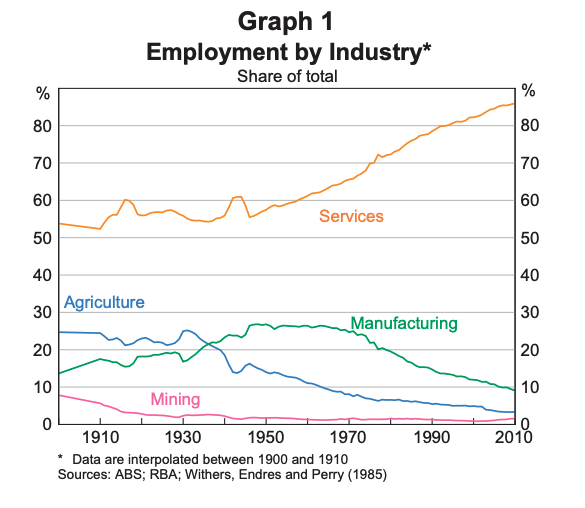
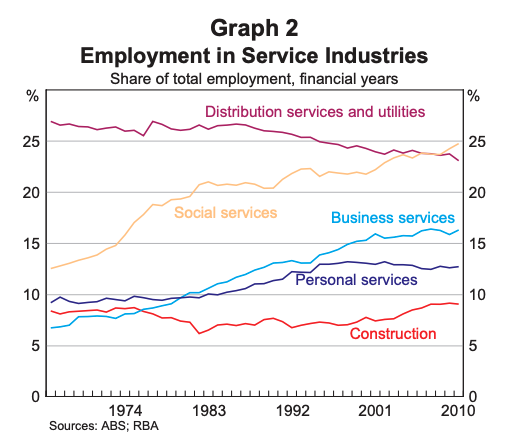
With China and Asia now manufacturing most of Australia’s goods, its economy gradually became more focused on the public sector with various government agencies and welfare programs spawning, making up a larger and larger percentage of the economy.
On top of this, government sentiment grew towards opening Australia’s borders up to the rest of the world after the removal of the dictation test within the ‘White Australia Policy’ which gave police the power to deport residents who couldn’t speak the language.
This started gradually before exploding in the 1970s with Whitlam’s complete abolishment of the policy which saw a massive influx in overseas migration which was later overshadowed by the early to late 2000s.
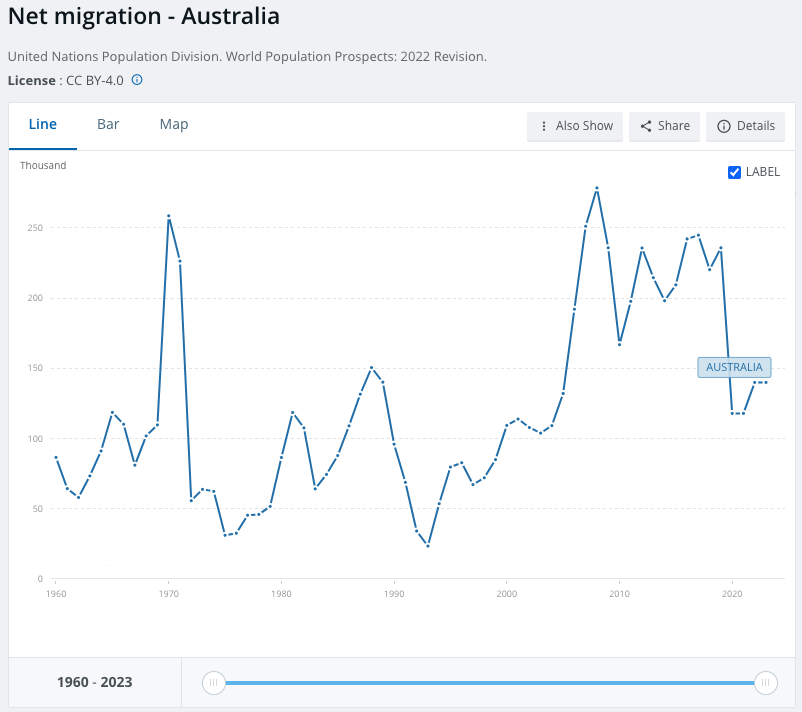
These extreme levels of migration were rationalised by playing on the public’s compassion towards global affairs such as the Tiananmen Square massacre, which allowed 42,000 Chinese students to seek refuge in Sydney, effectively creating the root of the ethnic enclaves we see there today.
This trend continued with various ethnic groups being granted entry under the guise that the government was doing a moral thing by helping these poorer nations. In reality, the government was reducing the amount of social cohesion within the country, particularly within the major cities of Sydney and Melbourne. By filling them with a mix of Asian and Middle Eastern minorities they formed microcosms that were completely antithetical to the Australian ethos.
This combination of our increasing reliance on international trade to provide Australia its goods, and the growing diaspora of migrants in the cities left the Australian working man without any leverage to influence political or public affairs within his community.
On the one hand, he was at the whim of the corporate shareholders who owned the company he worked for, and on the other, any protest against said globalisation or the influx of migrants would be met with ridicule as the ever so prominent phrase “racist” began to gain traction amongst those in academia and the media.
On top of this, the value of working class labour began to lose its value rapidly as more and more women entered the workplace, along with masses of migrants, completely undercutting the average Australian man’s value within the market.
Property investing, the housing bubble, and the rise of debt-based economics
Ever since the invention of the credit card in 1946, Australia has become more reliant on credit and loans to purchase goods previous generations took for granted.
This is most obviously seen within the housing market with most people below the age of 30 giving up on their dreams of owning a house due to high levels of
inflation, as well as artificially created demand resulting from mass immigration. This is made worse by the growing influence of those within the property investing industry with the amount of foreign ownership from China increasing day by day.
What results from this is the Australian working man effectively becoming enslaved by debt as fewer and fewer people own their homes as opposed to a mortgage.
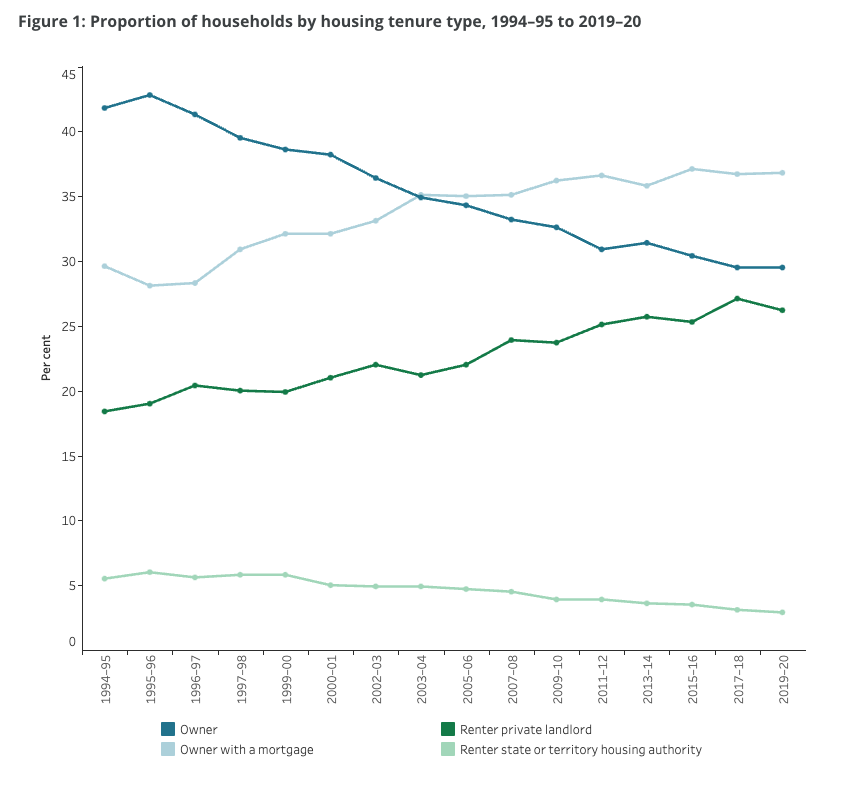
Another observation one can make from the graph above is the rise of private landlords within the market.
Thanks to John Howard’s introduction of negative gearing and the speculative aspect of the property market that peaked in 2008, (before once again rising) property investing became more and more crucial to the aging population’s retirement plans as wages stagnated and the industry shut down.
This has effectively resulted in a two-tier society with landlords at the top benefiting from the usurious magic of compound interest and renters at the bottom who are forced to become poorer and poorer with little power to affect their circumstances.
The political consequences and the rising fear of the people
In summary, all these factors contributed to a complete silencing of the working man’s voice within politics and culture.
Not only does he not have a secure place to live and raise a family, but he no longer has a cohesive community to rely on in a time of need, nor any leverage within his workplace or industry.
On top of that, he is also likely to be swamped by mass amounts of debt which hangs from him like a ball and chain, imprisoning his mind with fear to prevent him from ever trying to understand the problems we face as a society today.
And with the ever-growing public sector dominating the share of Australia’s market most people are completely reliant on the Australian Government for their paycheck and means of survival.
This creates a population of unorganised plebeians in the form of migrant workers/renters who don’t understand the economy they’re in and often end up owning simple hospitality businesses, and semi-educated professionals working within the corporate landscape of academia and government.
Proposed solutions looking towards the future
The problems the Australian working class faces are immense. Class conflict between renters and landlords. Ethnic conflict between natives and immigrants. Industry conflicts between shareholders and workers. Cultural conflicts between men, women, and every other group you can imagine.
However there there is a solution, and that lies in the formation of Anglocentric, nationalist groups that advocate for such ideas as:
- A closed economy and a focus on manufacturing. This means Australia’s resources are used for the Australian people using Australian labour for the good of the people
- Closed borders and the possible deportation of certain ethnic groups with a particular focus on international students to open up the rental markets to natives
- Property investing caps to prevent the hoarding of the housing supply by the wealthy and abolishment of foreign ownership
- Christian fundamentalism and the adoption and promotion of British, Anglo-Celtic culture/history to reinforce the ethnic identity of the native Australian population and regain our lost social cohesion
Perhaps if enough of these vanguards form to support each other in this plight we may see a return to the prosperous and beautiful Australia that we once loved so that our children may have the pleasure of enjoying it too.
Header image: Holden Motor Body Works at Woodville, South Australia, 1928 (State Government Photographer, CC0, via Wikimedia Commons)
Laurence McIntyre is the creator behind WhatsNews!?, an independent news and media outlet found on TikTok, X, and YouTube.
